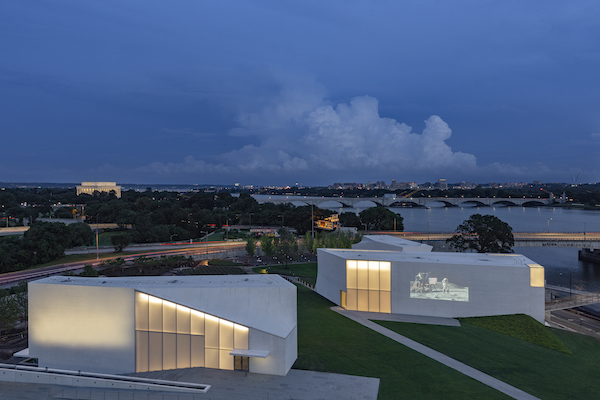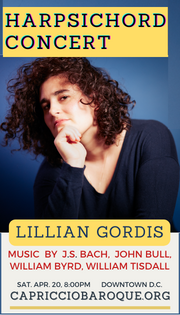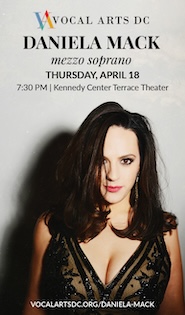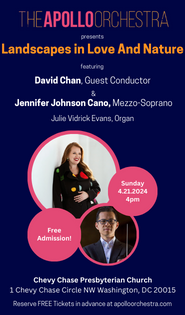Reach falls short of grasping Kennedy Center issues

On September 7 the Kennedy Center officially opened its new 4.6-acre expansion to the south, a project dubbed the Reach. Originally announced in 2013 with a budget of $100 million and an opening in 2017, the new structure inevitably ran into all sorts of problems. With the opening delayed two years, the budget ballooned to a cost of $250 million. Private donors with big pockets ultimately stepped forward to pledge the remaining funding, even as the institution raced to finish the project.
As viewed at its opening, the architectural results are impressive, filling gradually with people for the first day of a 16-day opening festival of free events. The foundation of Steven Holl’s design is an underground parking garage, euphemistically called the “Parking Grotto” in publicity materials for the Reach. If you arrive by car, you can then access the warren of hallways, studios, an auditorium, art gallery, and cafes. These subterranean spaces are lit from pavilions that project above ground into the southern part of the property, now redesigned into a memorial garden, complete with a grove of gingko trees.
The Reach makes a beautiful visual annex to the Kennedy Center, curving in waves that soften the original building’s rigid rectangular lines, and intimate in scale to complement the Center’s cavernous hallways and performance spaces. To accomplish it, vast sums of money were required to mitigate soil contamination—one of the unpleasant surprises that cropped up during construction—not unusual for a project built on an urban infill site. Holl’s building crew also had trouble pouring and securing those signature curved walls at first, most notably in the “video wall” on the side of the largest pavilion. Once the process was perfected, it went more smoothly.
On opening day, Kennedy Center chairman David Rubenstein and president Deborah Rutter presided over the official opening ceremony. Rubenstein claimed that the project had three goals: to make the Kennedy Center more connected to the city around it, to provide a space to inspire young people, and to open up the sometimes closed world of artistic creativity to audiences, who can now look through window-laden walls to watch rehearsals in the studio spaces.
Muriel Bowser, mayor of the District of Columbia, attended the festival, marching in the ersatz, sparsely attended opening parade with her daughter Miranda, adopted in 2018, in a stroller. The mayor, who is currently embroiled in a bitter attempt to seize control of the city’s Commission on the Arts and Humanities, spoke approvingly of the Kennedy Center’s attempt to connect through art with “the real Washington,” as she put it, meaning the city’s permanent residents.
_____________
So the Reach is a beautiful thing to look at, and it has delivered 72,000 new square feet of interior area, including much-needed rehearsal and lecture and cafe spaces. The question that should trouble classical music fans is that, if the Kennedy Center suddenly came into an extra $250 million, is this the best way to spend it?
Most of the answers to that question would not have led to a space aimed at tourists being able to catch a glimpse of rehearsals. The Concert Hall has long needed a thorough acoustic overhaul and general renovation. The National Symphony Orchestra and Washington National Opera should be able to offer more subsidized, lower-price tickets. WNO has not expanded the size of its season in years, and the Kennedy Center should ideally host more world-class touring ensembles, who often pass through North America without stopping in the capital of the United States.
On the other hand, the Reach tells us a lot about the priorities in place. In the five years of Deborah Rutter’s tenure, the profile of jazz, Broadway, world music, and hip-hop has risen consistently. The number of attention-catching artistic advisers from the worlds of popular music has exploded: Jason Moran’s position elevated from artistic adviser for jazz to artistic director in 2014; Q-Tip appointed artistic director for hip-hop in 2016; Ben Folds named artistic adviser for popular music to the NSO in 2017; even Renée Fleming, appointed artistic advisor in 2016, has focused her new concert series, Voices, mainly on popular music.
While it is laudable to expand the Kennedy Center’s mission to include popular forms of music, that shouldn’t be to the ultimate detriment of its historic focus. The programming of the Reach Festival echoes the Kennedy Center’s new focus in the Rutter era. The art forms at the core of the Kennedy Center’s mission since its founding—classical music, opera, and ballet—are sidelined over the long arc of the Reach Festival’s sixteen days. Boasting over a thousand artists in more than 500 events, all open to the public free of charge, the festival features only a small number of events featuring classical music, opera, and ballet. And even some of those feature crossover programming.
_____________
The NSO, to its credit, gave a complete performance of Beethoven’s Ninth Symphony on the first day of the festival, through amplification in the south plaza, now known as the Reach Plaza. Thomas Wilkins, music director of the Omaha Symphony Orchestra, conducted with patience and assurance. Four excellent singers from the recent years of WNO’s Domingo-Cafritz Young Artists program did the solo honors with aplomb: soprano Alexandria Shiner, mezzo-soprano Rehanna Thelwell, tenor Joshua Blue, and bass Samuel Weiser.
The considerable forces of the Heritage Signature Chorale took their places in the space in front of the temporary stage to sing the finale with gusto. While the orchestra was shielded from the blazing afternoon sun on a temporary covered stage, the chorus was not, but it did not seem to bother them. The crowd, invited to sit in the sun on blue cardboard boxes, never filled the plaza.
Unspoken in the placement for this event was the obvious point: there is no indoor location in the Reach that could have accommodated performance forces of this size. The Justice Forum auditorium in the Reach, which seats about 144 people, will now host the NSO pre-concert lecture series. Other smaller-scale events like discussions, coachings, master classes, workshops, and chamber performances can be accommodated. The NSO has already used Studio K, a space slightly larger than the Opera House stage, as an alternate rehearsal space, but for the most part, the NSO will continue to rehearse where it has always rehearsed at the Kennedy Center, on the stage of the Concert Hall.
It is not even clear that the Reach accomplishes the goals laid out for it by Chairman David Rubenstein. The Kennedy Center still remains largely physically isolated from the neighborhood around it, garroted by loops of highways that funnel commuter traffic in and out of the District. The Presidential Grove, a gravel park filled with gingko trees that extends the Reach right up to the Theodore Roosevelt Bridge, is bordered by Highway 66 and the Rock Creek Parkway. Sitting there for the opening ceremony, one’s ears were overwhelmed by the roar of car traffic, as well as military helicopters and jets from National Airport that buzzed past.
A pedestrian bridge over the Rock Creek Parkway connects the Reach to the Potomac riverfront and the Rock Creek Trail that runs along it. Bicyclists and pedestrians crossing the Roosevelt Bridge from Virginia can also enter the campus of the Reach. It seems doubtful that many visitors to the Kennedy Center will make use of these new access points. Most people will continue to arrive by car or approach from the Foggy Bottom neighborhood and its Metro stop. The Reach is not even visible to visitors who approach that way, that is, from the north side.
For most of the regular ticket-buying patrons of the Kennedy Center, the Reach will not make much difference in their lives. Patrons attending an NSO concert or an opera performance or a chamber music concert in the Terrace Theater will likely not set foot in the Reach. Its primary impact will be in the institution’s educational outreach, as a place to show the many school-aged visitors to the Kennedy Center, many of them visiting from other parts of the country, a brief glimpse of what the arts are all about.
The Reach goes a long way toward humanizing the face that the Kennedy Center turns toward the public, especially to visitors who may have never have attended a performance there. It remains to be seen if the enormous expense of the new annex brings any new faces into the halls where the more traditional arts forms—classical, chamber and ballet—are heard.








Posted Sep 19, 2019 at 6:28 pm by Eric
Crude snotty column – stand up more often and ease the pressure pressure on your brain
Posted Sep 20, 2019 at 10:16 am by Eric S.
Hello, I appreciate your interest in and concern for the future of the Kennedy Center. That said I think you were unduly harsh in your assessment – the REACH is easy to approach from the main building and will allow for artistic endeavors and rehearsals that were more difficult in the main building . I think the NSO will be fine. Also the arts are more than (and I am speaking as a lover of classical music) classical music and the arts should not be the private preserve of wealthy patrons – I think JFK would be proud of the REACH and what it will mean for the arts in America for generations to come.
Posted Sep 20, 2019 at 12:49 pm by Alan Karnovitz
This is an excellent article. When I received the schedule of the “Reach” opening ceremonies I was appalled. The list of performers encompassed every “politically correct” ensemble and genre to the almost total neglect of western art music. Even Jazz, the truly authentic African-American indigenous art form was barely acknowledged.
Rutter is clearly determined to dumb down the DC Arts Scene and render the KC into a glorified 9:30 club that for financial reasons only, tolerates the NSO and Wash Opera. I had no problem with bringing in some pop entertainers. But the shunning of art music was disgraceful!
Posted Nov 01, 2019 at 9:33 pm by Jen smith
I totally agree with the writer above. I dont feel this was the best use of the funds it cost to build this.
I’ve been coming to the center for a long time having grown up here. Its original purpose in 1971 and function was to provide access to the arts for all. Instead they sell truly expensive seats. And while they attempt to provide ways for young old and military to get discounted seats. Nothing for anybody else. You’ll see the price of orchestra tickets which were $15.00 for obstructed view now cost $29.00. As time gets closer to the performance they go up. Over the years they have gone from a $12.00 charge for the underground parking to adding $2.00 every year for the past 15 years.
The bathrooms need updating. The water fountains as well. They seem to have taken out a lot of the underground parking so there isn’t as much. They’ve closed one of the entrances so makes it more difficult. The lighting in the opera house on the 2nd tier is set so low you can’t read the program in your seat or out in the foyer. Which is ridiculous particularly if you are seeing a new ballet and need to read the storyline. The programs they produce are printed cheaply and have ink that is too light and type so small — putting money into that and other things mentioned would be helpful.
And I personally do not go to the Kennedy Center to go see local performers. I go there to see professional shows and orchestras. Ever since the new director of the Kennedy Center has come on board she stopped bringing in the big ballet companies. They bring in Atlanta ballet or Pennsylvaia ballet. They also would set up a ballet schedule where if you bought season tickets you were seeing one ballet one weekend and then another another week. When the director came in she started bringing in big musicals and cut the ballet. I also think she has probably never sat up in the second tier in the last seat at the top or ever goes up there so doubt she has any idea what it’s like for patrons who pay tickets..
I just think the Reach is a little weird. And having the Kennedy Center open for bikers to come across from the river while nice makes it a bit difficult for security. Plus I thought it looked junky with the food trucks outside. And all the cords and wires for whatever they did outside. If I want to go see local performers I can go to stuff in Arlington or other places.
Theres also very little way to communicate with the director or any of the individuals who run the Kennedy Center so they get feedback from people who actually pay for tickets. Rather they listen to their rich donors who I’m not sure are really in touch.
Posted Mar 29, 2020 at 7:18 pm by Nathan Redshield
Very interesting. I came here trying to get facts and other necessities in understanding the situation regarding the “Viral Stimulus” Bill just passed and the $25 million for the Kennedy Center–and whether that was done to help offset damage from the “Viral Panic” or whether there were deeper issues of bad management.
Does the Kennedy Center compete against Wolf Trap? I have heard rumblings the KC can be ruthlessly aggressive with local commercial producers of comedy entertainment. I have relatives in the Washington area and someday I might go to the KC; I do know someone high up in the WNO.